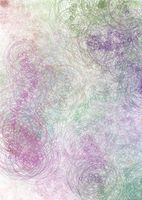|
Size: 103
Comment:
|
Size: 1445
Comment:
|
| Deletions are marked like this. | Additions are marked like this. |
| Line 3: | Line 3: |
| <<TableOfContents>> * Please bring a laptop with you to class. Windows is preferred. * Please bring with you the power adapter for your laptop. == Week 1 == 12 hours (6 class hours + 6 practice hours) + extra hours if needed. Challenge:: * Creating static visual arts. At the end of the week, every student is expected to be able to * Create an artistic poster that demonstrates beauty and complexity, using Processing * Print the result and present with a frame, or on a form board. * Examples [[attachment::lines.pdf|{{attachment:lines.jpg}}]] [[attachment::flowers.pdf|{{attachment:flowers.jpg}}]] == References == Websites:: * [[http://www.processing.org|Processing]] * [[http://www.arduino.cc|Arduino]] Books:: * ''Getting Started with Processing'', by Casey Reas and Ben Fry. Published June 2010, O'Reilly Media. 208 pages. Paperback. * ''Learning Processing: A Beginner's Guide to Programming Images, Animation, and Interaction'', by Daniel Shiffman. Published August 2008, Morgan Kaufmann. 450 pages. Paperback. * ''Getting Started with Arduino'', by Massimo Banzi, Publisher: O'Reilly Media / Make, Released: December 2008 * ''Making Things Talk: Practical Methods for Connecting Physical Objects'', by Tom Igoe, Publisher: O'Reilly Media / Make, Released: September 2007 |
Integrating Technology for Intelligent Products, Systems and Services
(c) 2011 Jun Hu, Loe Feijs
Contents
- Please bring a laptop with you to class. Windows is preferred.
- Please bring with you the power adapter for your laptop.
1. Week 1
12 hours (6 class hours + 6 practice hours) + extra hours if needed.
- Challenge
- Create an artistic poster that demonstrates beauty and complexity, using Processing
- Print the result and present with a frame, or on a form board.
2. References
- Websites
Getting Started with Processing, by Casey Reas and Ben Fry. Published June 2010, O'Reilly Media. 208 pages. Paperback.
Learning Processing: A Beginner's Guide to Programming Images, Animation, and Interaction, by Daniel Shiffman. Published August 2008, Morgan Kaufmann. 450 pages. Paperback.
Getting Started with Arduino, by Massimo Banzi, Publisher: O'Reilly Media / Make, Released: December 2008
Making Things Talk: Practical Methods for Connecting Physical Objects, by Tom Igoe, Publisher: O'Reilly Media / Make, Released: September 2007

